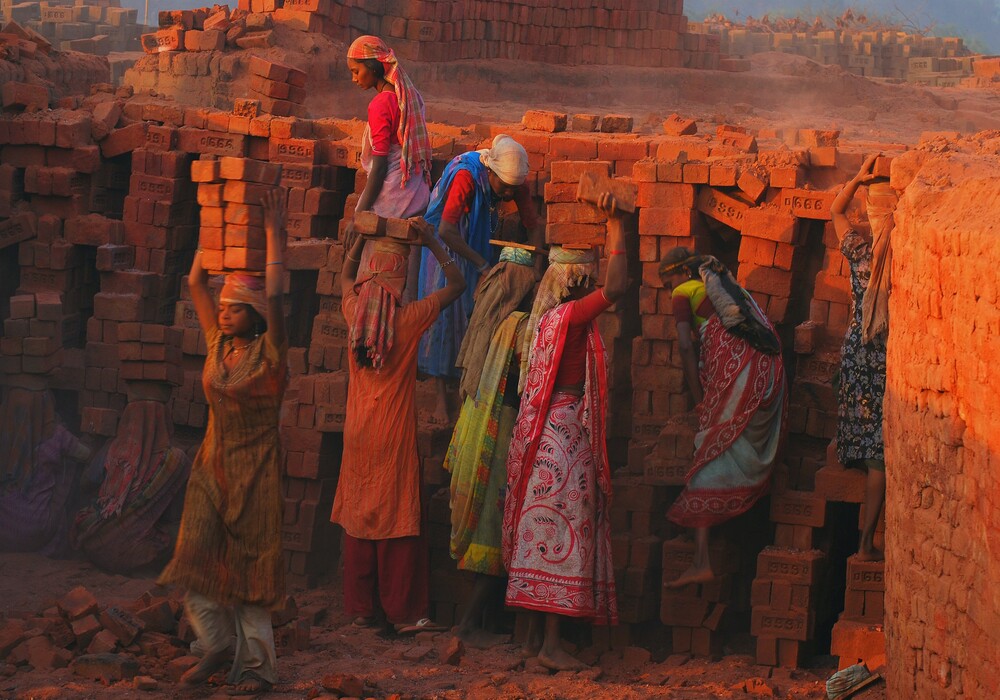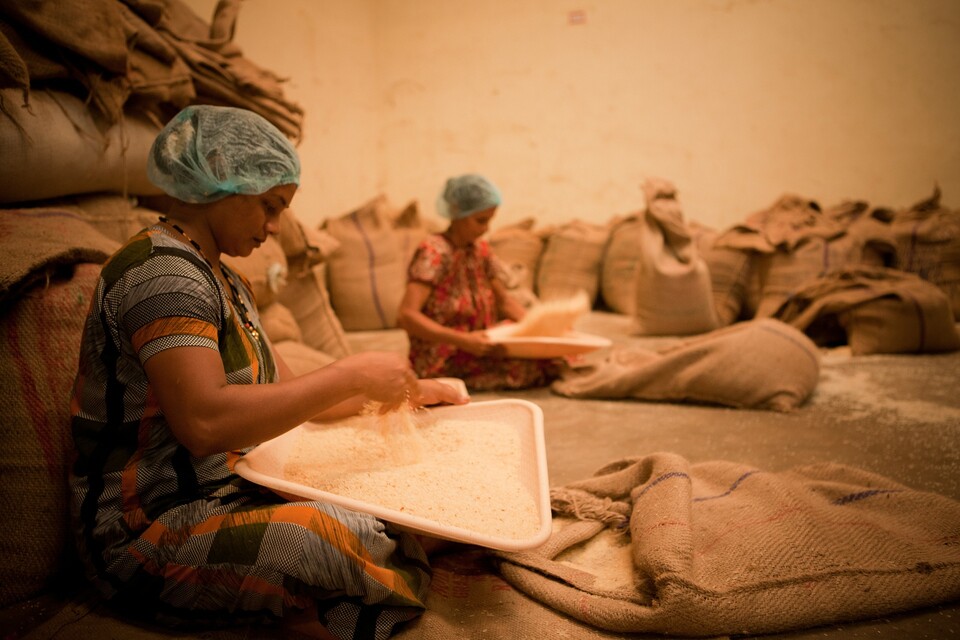At 16.1 per cent, India has one of the lowest female work participation rates in the world. Some of the contributing factors have received a lot of attention. Discrimination, sexual abuse and exploitation, and other forms of violence discourage and thwart women from work. There are also social and cultural barriers which have existed for decades - precarity of employment, lack of social security, poor facilities in workplaces, and disproportionate responsibilty for child and family care.
One key factor that hardly finds mention in policy discussions about women's employment is migration. We generally associate the word 'migrants' with pictures of men leaving villages seeking work in cities. But women migrate a lot too, and this has huge implications for their ability to find work and keep it. Useen, yet wide-spread, this migration shapes the lives of women across all sections of society.
A gender perspective on migration is important not just because it influences women’s entry into various ecosystems related to higher education, skilling and employment, but also because women have significantly different migration motivations, patterns and obstacles than men. The absence of this perspective is a structural barrier that not only perpetuates invisibility of female migrants, but also prevents them being recognised as a key component of the budding Indian workforce.
With existing govt policies failing to secure any legal or social protection for this group, migrant women continue to occupy the most precarious jobs in our economy, even as their work largely remains invisibilised and unregulated.
Facts and figures
Census data tells us that marriage is the single biggest reason that women migrate. Whereas men move mostly for work, nearly 154 million of the total 221 million women migrants reported moving when they married. But their motivations and experiences are not uniform, and a closer look reveals plenty of nuance. For example, whereas women from rural areas who migrated for marriage were more likely to be working than urban women who moved for the same reason. The gap is also quite significant - the National Sample Survey 2007-8 put the figures for the two groups at 31 per cent and 13.3 per cent respectively.
 Migrant women's work largely remains invisibilised and unregulated.
Migrant women's work largely remains invisibilised and unregulated.
Picture credit : Pixabay
In fact, women who moved for marriage constitute a large share of the female workforce, an overwhelming 62.5 per cent in rural areas and 31.2 per cent even in urban areas. The bottom line is that "women who move for marriage are a majority (57.4 per cent) of the female workforce in India", concludes a report by the government's working group on migration.
Census data on migration fails to capture this reality, because the surveys ask for only one reason to be stated for migration. "This is usually stated as marriage and the secondary reason, that is finding work at the destination, may not be mentioned," Priya Deshingkar and Shaheen Akhtar of London's Overseas Development Institute wrote in an April 2009 paper published by the United Nations Development Programme.
The last couple of decades have also seen an increasing number of women migrating for economic reasons, data shows. Between 2001 and 2011, female migration more than doubled from 4.1 million to 8.5 million. In the same period, the number of women who cited business as a reason for migration also increased by 153 per cent, more than four times faster than the rate for men (35 per cent). There is a change in their destinations; from a largely rural-to-rural tilt until the late 1990s, more women have begun migrating to urban areas in the last two decades. In 2001, 47 per cent of all women migrating for work/business were in urban areas in 2001. By 2011, this had jumped to 58 per cent.
Experts say that this trend is likely to have further intensified since 2011 with the Periodic Labour Force Survey (PLFS) data for 2017-18 revealing a drastic drop of seven percentage points in work participation rates of rural women. In absolute numbers, that amounts to nearly 25 million women workers exiting the rural workforce since 2011-12, and nearly 47 million women if the earlier 2004-05 data is taken as the benchmark. And even though this decline persists across all social groups, it is highest for women from SC/ST categories; their WPR has dropped by nearly 10 percentage points from 2011-12 to 2017-18.
"Such a large-scale, and historically unprecedented eviction of women from the rural workforce, especially of the most oppressed cates/communities, highlights the negative impact ... of agrarian distress, and an employment crisis that is highly gendered," Indrani Mazumdar and Neetha N write in their paper on migration, gender and trafficking.
Reasons for female migration
A host of factors - both economical and social - are driving women to migrate. In rural areas, factors like agricultural distress, changing land use patterns, increased mechanization, and environmental degradation have increased levels of poverty and unemployment for females, forcing them to move to urban areas for work. In urban areas, the emergence of gender-segregated labour markets post liberalisation has meant that many low skilled, uneducated women can find opportunities in the informal sector.
Higher female literacy as well as attainment of education are also driving many women to migrate. Largely though, it is estimated that eighty percent of the country's migrant women work in the informal sector - in activities like agriculture, construction, transport, domestic work and mining on a contract basis. Manufacturing workers constitute the single largest occupation for the female workforce in urban areas (45 lakh women are in this sector), followed by teaching (27.5 lakhs) and domestic work (20 lakhs).
A vast majority of them are uneducated, and engaged in low paid and low skilled work, data shows. Data also shows that they almost always earn less than men, and are more susceptible to exploitation due to undervaluation of their work. Additionally, they face added risks associated with safety due to lack of access to crucial services like housing, public toilets, affordable healthcare and public transport.
The economic uncertainty and reverse migration due to the pandemic has further aggravated their misery. A survey of women migrant workers from 12 Indian states conducted by UNDP found that their incomes fell by more than half during the pandemic compared to pre- pandemic levels. Another study that was conducted in Delhi and Gurugram found that the pandemic not only led to loss of livelihood -- e.g. far fewer women than men in Delhi were still working a few months into the lock-down -- but also severely impacted migrant women's nutrition and well-being.
The way ahead
Chiefly, two things come in the way of securing legal and social rights for migrant women workers. First, they mostly fall outside the ambit of social benefits and key legislation made for women. Second, the prevalence of informality in their work makes them prone to exploitation, even as it becomes difficult to create rules and regulations to fix responsibility for it. Improving their socio-economic reality therefore requires a will to tackle structural challenges around visibility and recognition.
 |
 |
A starting point to do this could involve collecting accurate data that would not just render visibility to these women, but also help fill knowledge gaps that occur in our understanding of this community. As the government launches social security schemes targeted towards women, it should ensure that they should also account for the specific needs of women workers. These could be geared towards quality and affordable child care, wage equality, occupational safety, affordable health, reliable public transport and safe cities.
Since migrant women are estimated to be the most vulnerable to job losses due to technological advancements, it is essential that they be targeted for skills training and upgradation taking into account the accelerated role of technology in shaping the future of work. The draft Migrant Labour Policy by the Niti Aayog proposes adopting a right based approach for creating a suitable policy for migrant workers. While it is a welcome idea, it largely overlooks the specific needs and concerns of migrant women.
At a time when women should be on the move socially and economically after decades of lagging behind men, it seems that moving itself is a big obstacle to their opportunities. A corrective course is needed, which is not only sensitive to the needs of women migrants, but also looks at creating an integrated social protection system for them, including across state borders.
